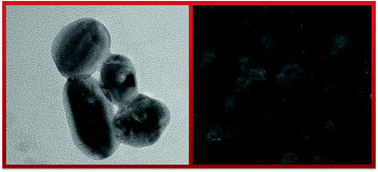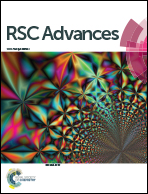One-pot synthesis of a polyaniline–gold nanocomposite and its enhanced electrochemical properties for biosensing applications†
Abstract
One pot synthesis of a polyaniline–gold (PANI–Au) nanocomposite has been conducted using a chemical route in the presence of dodecyl benzene sulfonic acid. This PANI–Au nanocomposite was electrophoretically deposited onto indium tin oxide (ITO) coated glass substrates and the electrochemical kinetics were compared with chronopotentiometrically deposited PANI–Au (in the presence of HCl) composite. The electrochemical results indicate that the composite prepared by the chemical route exhibits an enhanced electron transfer coefficient (α) of 0.92 and charge transfer rate constant (ks) of 0.0848 s−1 as compared to the film deposited using the chronopotentiometric technique (α = 0.85 and ks = 0.0368 s−1). These fabricated matrices have been further utilized as biosensing platforms for the detection of sexually transmitted disease. The PANI–Au based genosensor has demonstrated enhanced sensitivity (10−16 M; linear range from 10−6 to 10−16 M) with a response time of 60 s and shows excellent specificity over other bacterial pathogens. The results of these studies help in understanding the method of synthesis on the electrochemical as well as catalytic properties of the composite and its potential for a wide range of biomedical applications.


 Please wait while we load your content...
Please wait while we load your content...